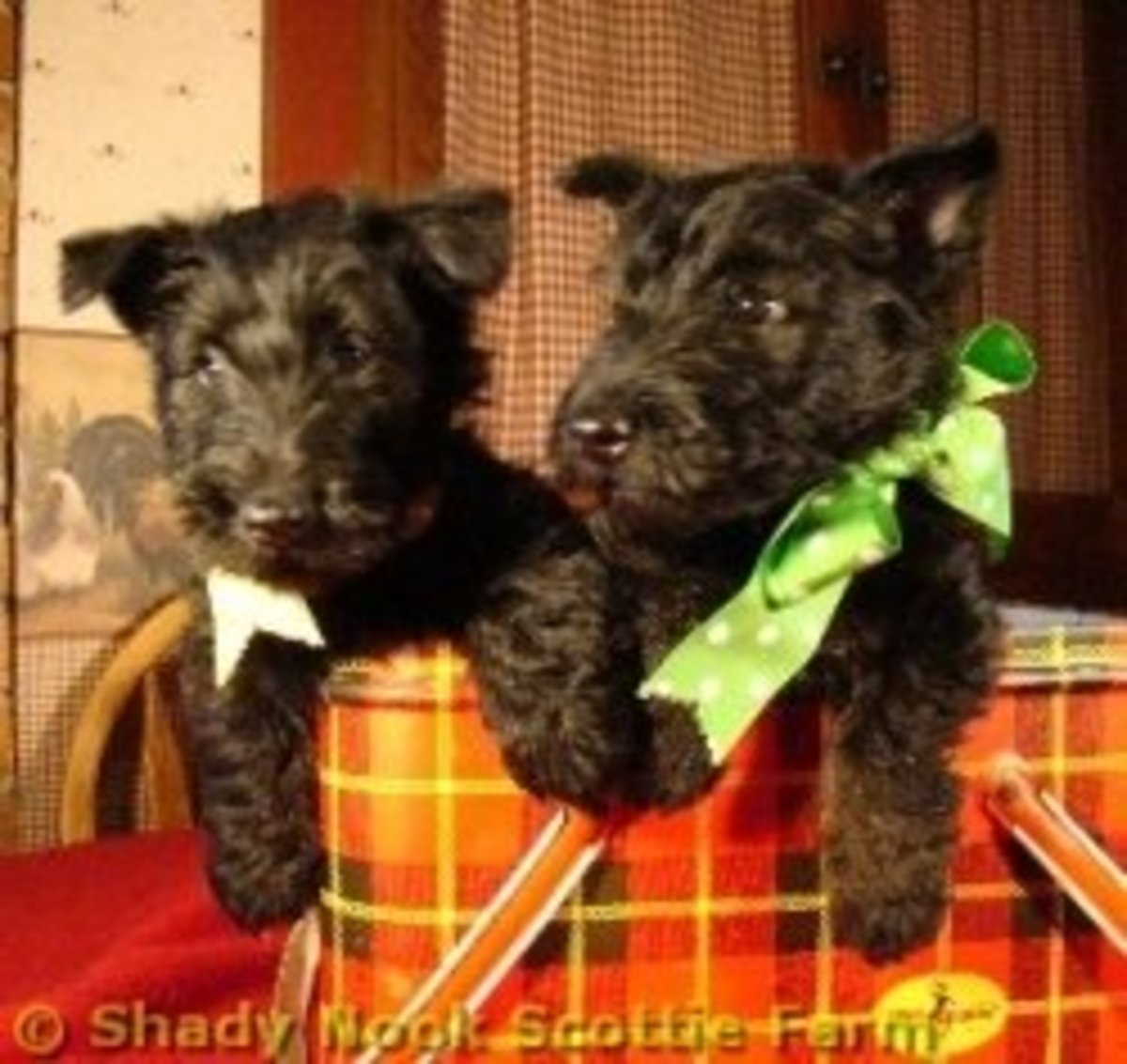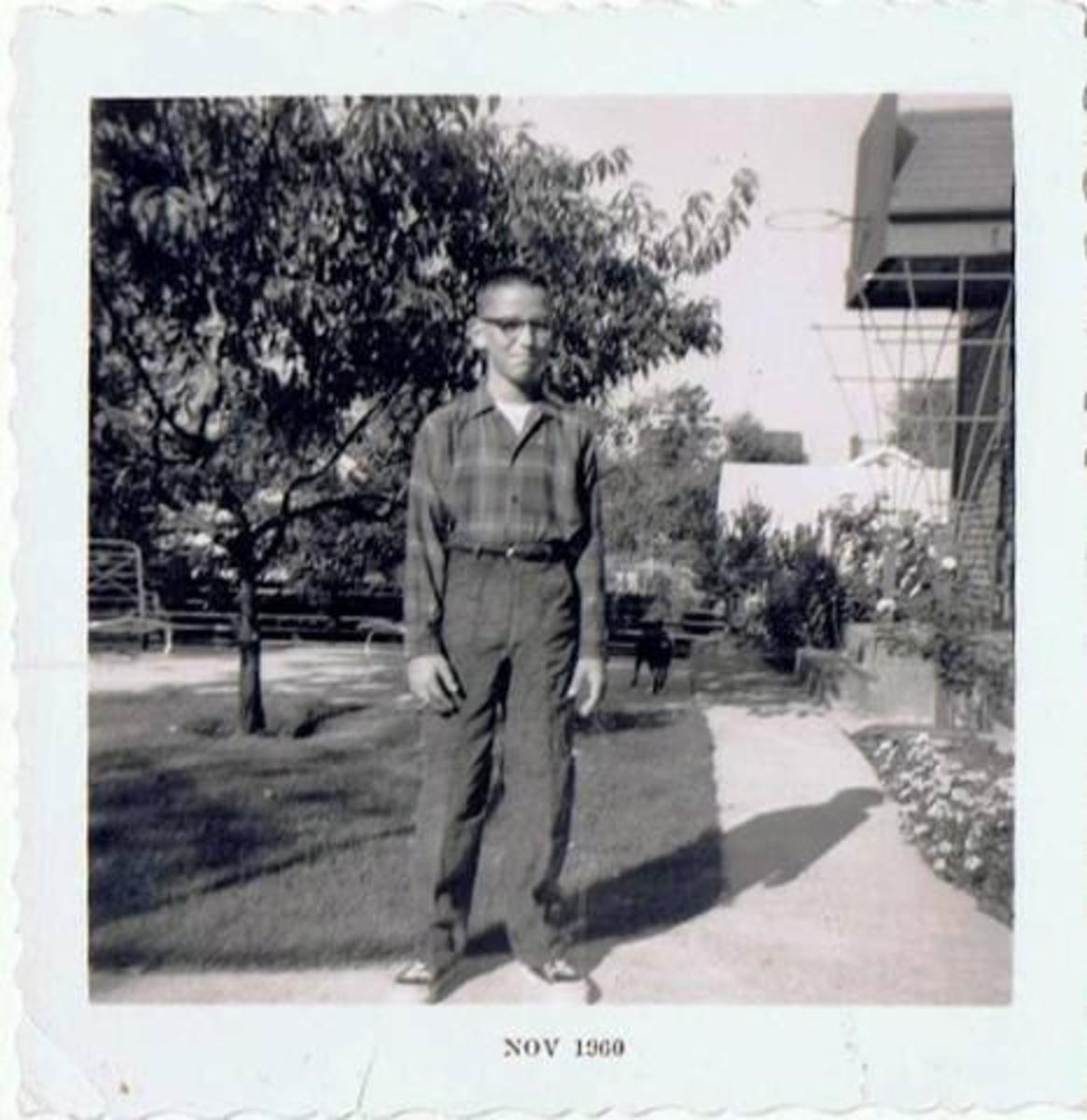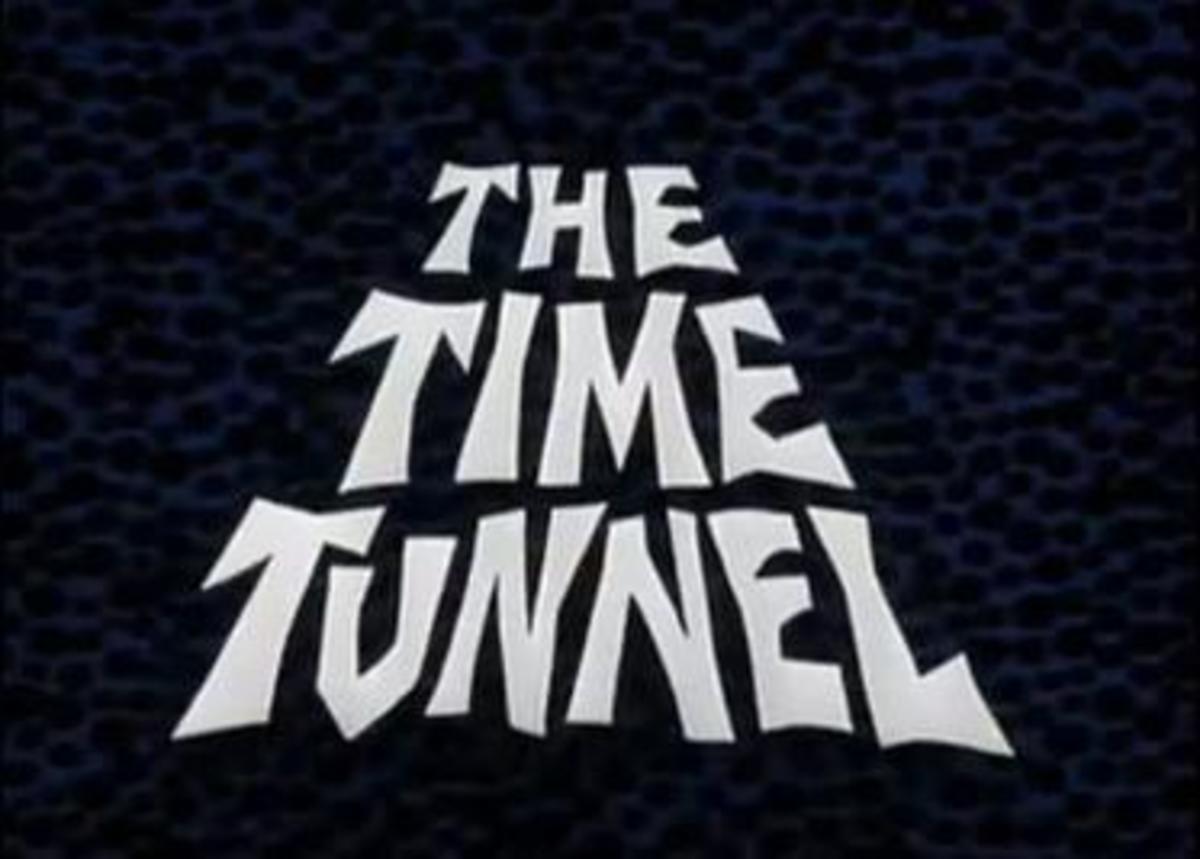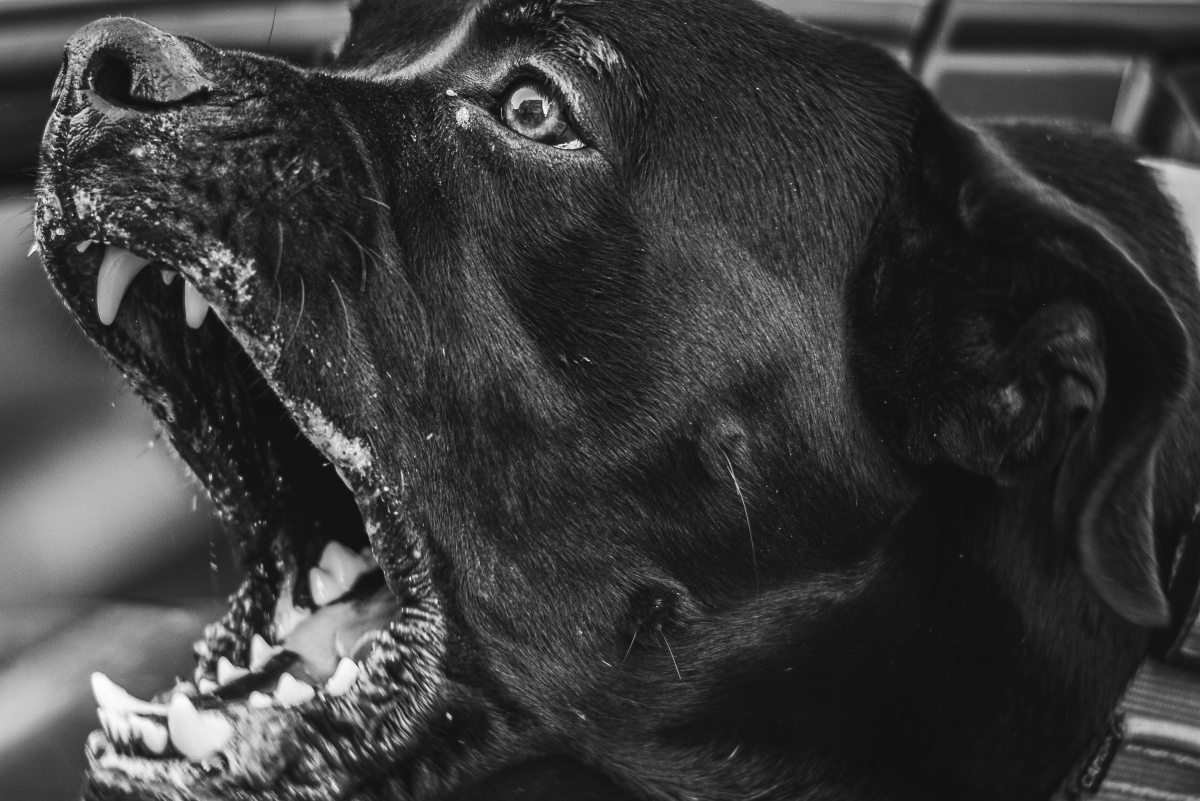Life with a Blockhead
Wild Thing, I think I love you
MacGregor Angus Becherer was born September 15, 2003 in Iowa. A hardy lad whose heritage began in the Scottish Highlands, the land of bagpipes and kilts, not what you'd expect from the farmlands of Iowa, he arrived in my arms at Christmas time already 3-months old, his Scottish lineage readily apparent. Adopted, sight unseen, it was love at first sight. Not an easy babe, he was already difficult, rather demanding, and destined to be spoiled. Gorgeous, blond, dark almond shaped eyes, perfection. In my arms, this little bundle of joy, was to become the greatest love of my life, the newest member of my family, my Scottish Terrier.
He haled from Iowa via the airlines in a crate marked "live animal" and was he ever. Although he slept most of his first three days after his arrival in Hillsboro, Missouri, I realized later he must have been sedated for the ride. He was small, in fact, my neighbor whose sister had a Scottie, remarked that he seemed really small. He is wheaton colored, which remains a curiousity for most of the strangers we meet on walks. Just last week, someone approached us during a walk to say, "well, he looks like a Scottie, but I've never seen one that color". Many people don't realize that the AKC standard includes not only the usual black color, but brindle, gray and wheaton. In researching the history of the first Scottish Terrier born in America, I was amazed to find that he shared MacGregor's birthday, born September 15th, 1884. So, MacGregor and I began our new relationship. Me, hopeful that he would settle into his new life happily and he, determined to be the boss. Thus began life with a blockhead.
It's all in the attitude
A little history
I grew up in a family of Scotty lovers. My parents owned two, but both were purebred demons. The first Mac exhibited such viciousness, my parents were advised by their insurance agent to find him another home as he presented a tremendous liability. Powerful little dogs, the first Mac broke heavy chains if tethered outside, chasing bicyclists, walkers and passersby in general. He broke free with some frequency; snarling, barking and foaming, terrier-rizing any unfortunate soul within his excellent field of vision. We stood at attention as the breeder, now the new boss, informed my folks that they should "stick with a cocker spaniel" rather than a tyrannical terrier. She advised that Scotties must be taught who is boss; not the other way around. We all cried as she drove away with an unusally subdued Mac.
My brother, the youngest, was relentless in his campaign for another Scotty. My parents acquiesed, only to once again, have the dubious honor of "all of the work" and not much joy in the trials and tribulations of corraling and maintaining order with this obstinate, headstrong, independent critter. When my brother, Steve, left for college, it was mom who inherited caring for Mac #2. He lived out his relatively short life with my parents, who loved him very much, until he developed cancer and passed on to greener pastures. Their grief and loss was too great to ever entertain the idea of acquiring another canine companion.
Scotties, although each is unique, all bear some characteristics distinctive to the breed. Genetically, Scotties have adapted to withstand the rigors of their harsh native land with their robust, muscular bodies. Their short stature, large feet and noses give them the necessary criteria to perform the job they were bred for, making it easy to detect small animals, and quickly dig them out of hiding. They have powerful jaws to grasp, shake and tear prey. They possess a harsh coat to repel rain and insulate them from the cold. The tenacious, terrier temperament refuses to be intimidated. It is important to consider the temperament of this breed before taking on the role of caregiver. They are courageous and loyal, but tend to form "one-man dog" relationships; and not necessarily with the one who feeds him. Scots can appear "aloof" at times when assessing a situation and will form it's relationships with people and other pets at his own pace. Scotties are very independent, alert, appealing and intelligent, appearing at times to be stubborn and obstinate. They require a good deal of patience. It is important, however, to keep in mind that this enabled their survival.
Some of the most important attributes caregivers need to know about the Scotty are (as rated by the Scottish Terriers "A Complete Pet Owner's Manual":
- Their grooming needs are "moderate".
- Trainability is "low".
- Watchdog ability is "high".
- Affection level is "moderate".
- Playfulness is "moderate".
- Energy level is "moderate".
- Exercise needs are "moderate".
- Friendliness is "moderate".
A Fine Specimen
A History of Champions
Selected Disease & Conditions of the Scottish Terrier
Blood Disorders:
- Autoimmunity hemolytic anemia: Possibly inherited
- Hemophilia B: Inherited as a sex-linked recessive trait
- Thrombasthenic thrombapathia: Inherited as an autosomal dominant trait
- von Willebrand's disease: Inherited as an autosomal recessive trait
Bone and Joint Disorders
- Achrondroplasia: Short curved legs: Autosomal recessive inheritance
- Craniomandibular osteopathy: Excessive bone development on the lower jaw, usually seen at 4 to 7-months of age, accompanied by discomfort when chewing: Autosomal recessive inhertance
Cancer
- Lymphosarcoma
- Squamous cell carcinoma
- Melanoma
- Recent research shows a predisposition to bladder cancer
Urogenital
- Uterine inertia, dystocia: Difficulty giving birth due to uterine smooth muscle fatigue and anatomical conformation of the dam (small pelvic area) and pup (large head size).
Central Nervous System
- Scotty cramp (also called Scotch cramp or recurrent tetany) Studies suggest this is an autosomal recessive disorder) characterized by muscular hypertension brought on by excitement or exertion, in which the legs are unable to move or are flexed against the body. The back is arched and the dog exhibits a stiff gait, skips, or is unable to stand. Onset can be as early as 6-weeks of age and most affected animals show symptoms by 1 year of age, although some may show symptoms as late as 3 years old.
Recessive inheritance means both parents must be carriers of the disorder for it to expressed in offspring.
Dominant inheritance means only one parent needs to be a carrier of the disorder in order for some of the offspring to be affected.
Sex-linked inheritance means that the disorder is linked to a chromosome also associated with determination of the animal's sex (X or Y).
Autosomal inheritance means the disorder is carried on any chromosome other than the sex chromosomes.
Of special personal note,
Allergies
Scotties are notorious for allergy related skin problems. Food allergies often express themselves by their detrimental effect on the skin and coat. My Scotty has had recurrent episodes of allergic dermatitis diagnosed by a veterinarian specializing in dermatology through examination with skin scrapings. MacGregor's frequent episodes would begin with incessant itching and scratching, progressing to staph infections, requiring multiple prescription antibiotics. My vet explained that Scottish Terriers and Cairn Terriers are the two breeds most commonly afflicted with this misery. MacGregor was taking a prescription drug called Atopica, which I researched and presented to my vet. He knew of the drug usage in canine cancers, but was unaware that it was being utilized for skin conditions. The first Rx cost $145 for one month from my vet. I researched cost further and was able to find it at PetMeds.com, who price match and include free shipping, at $69 for a month's supply. MacGregor suffered one of the most common side effects of this potent drug, which is frequent diarrhea. I have managed to wean him off of the drug, as long-term side effects of this powerful immunosuppressent are yet unknown. Modifying his diet with low-antigen, hypoallergenic veterinary foods have, for the time being, been helpful.
Obesity
The ideal acceptable weight for an adult Scottish Terrier is classed between 20 to 25-pounds. The general rule is if you can't feel your pets ribs, it's time to cut back on the calories. Unless your adult Scotsman is a hard-working, very active sort, he probably does not require more than one to two meals daily. I prefer the "free choice" feeding, meaning food is available at all times and the dog eats at his desire. Unfortunately, although convenient for me, MacGregor is not a good judge of what is best for him. I have been unable to resist his charm, especially when the one trick he has learned is sitting up, looking adorable and begging. He is relentless as he recognizes a pushover. As a result, MacGregor is now at 34 lbs. so I do not qualify as a expert regarding dinner. As with any questions regarding any aspects of care, I would always recommend consulting with your vet.








